Hiking Adventures in Monongahela National Forest
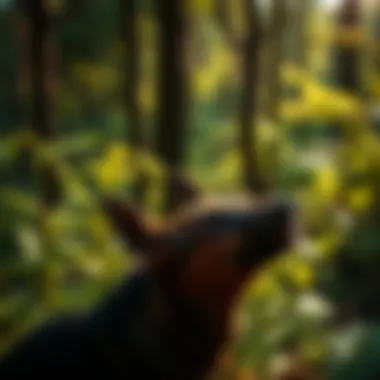
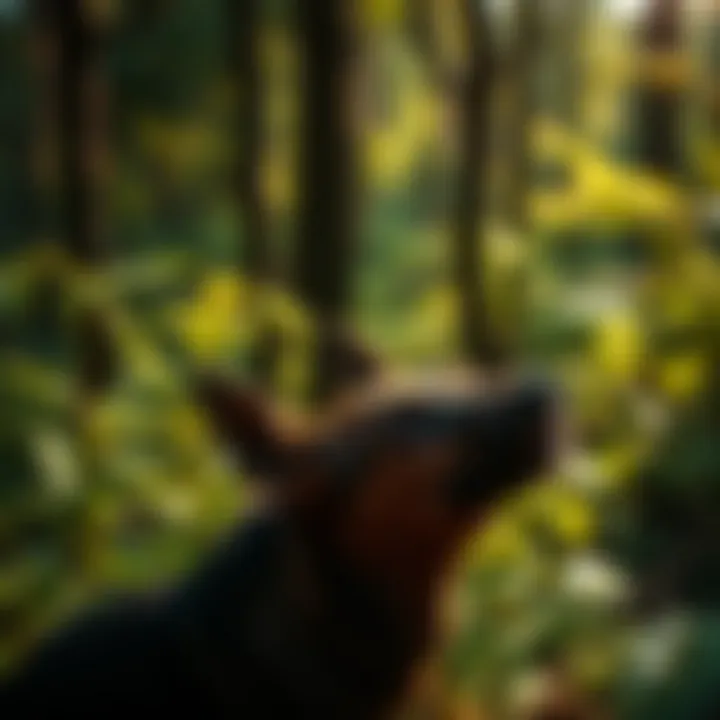
Intro
Monongahela National Forest stands as a testament to nature's resilience and beauty. Nestled within the mountains of West Virginia, this forest offers a sprawling landscape that beckons both seasoned hikers and novices alike. With trails that weave through lush greenery, around babbling brooks, and up rugged peaks, the forest is a haven for exploration and discovery. It’s not merely about the hike; it's an opportunity to immerse oneself in the unique ecosystem that thrives within its boundaries.
Hiking in Monongahela is more than just a physical challenge. It’s about connecting with the environment, understanding the biodiversity that exists here, and appreciating the historical and cultural tapestries woven into the very land beneath our feet. This guide aims to unravel the layers of this forest's ecosystem, provide insights on sustainable forestry practices, and highlight the community's role in preserving this natural treasure. So, lace up your boots and get ready to journey through the wonders of Monongahela National Forest.
Preface to Monongahela National Forest
The Monongahela National Forest, located in the stunningly picturesque mountains of West Virginia, stands as a paradise for hikers and nature lovers alike. This vast expanse of greenery, stretching over 919,000 acres, is not just any patch of wilderness; it’s a tapestry of trails, ecosystems, and cultural heritage that beckons adventurers from all walks of life. Exploring this forest offers an amalgam of past and present, where every step along the beaten path unveils the lush beauty of the natural world intertwined with rich historical significance.
Historical Context of the Forest
The history of the Monongahela National Forest is steeped in layers just as intricate as the forest floor underfoot. Established in 1920, the forest was born out of a need to protect the land from the devastations of logging, mining, and agricultural practices that had plagued the region. The area was once denuded of its trees, but efforts to restore the land took flight in the early 20th century, leading to the lush landscape we cherish today.
Wandering through these trails, one might stumble upon remnants of the past—historical settlements, remnants of railroad lines, or even a few overgrown homesteads. These sights whisper stories of the people who once called this wilderness home, the hard-fought battles against nature and industry, and the perseverance to reclaim and preserve the land.
Geographical Significance
From a geographical standpoint, Monongahela National Forest serves as a critical habitat for a myriad of plant and animal species, many of which are integral to the Appalachian region’s biodiversity. The forest is not just a mass of trees; it features a variety of landscapes, including stunning mountains, deep valleys, tranquil streams, and over 1,000 miles of trails that wind through diverse ecosystems.
The varying elevations across the forest create microclimates that support different flora. Visitors can find themselves traversing above the cloud cover one moment and then down among the lush ferns the next. This geographic diversity makes the Monongahela an ecological treasure trove. In addition, its location within the central Appalachian mountains plays a critical role in providing resources such as clean water, air quality maintenance, and habitat connectivity—crucial for wildlife movement.
"The Monongahela National Forest isn’t just a recreation site; it’s a sanctuary for the environment and a testament to conservation efforts that shaped its very existence.”
Hiking Trails Overview
Hiking trails serve as the lifeblood of any national forest, enabling nature lovers to experience the diverse offerings of Monongahela National Forest. Each trail tells a unique story, revealing the forest’s hidden gems and breathtaking vistas while providing a physical challenge that can invigorate both the body and the mind.
The significance of these trails goes beyond mere leisure. They play a crucial role in promoting mental well-being, enhancing physical health, and fostering an appreciation for nature’s splendor. Whether you're a seasoned hiker or a novice adventurer, there's a suitable pathway awaiting you.
Trail systems command the landscape of Monongahela, creating a network that not only connects hikers to various ecosystems but also highlights the region's stunning biodiversity. When exploring these trails, there's more at stake than just reaching a destination; each step offers the chance to engage with the local flora and fauna, from towering trees to elusive wildlife.
It's essential for hikers to understand that the forest's trails vary greatly in terms of length, scenery, and complexity. A thoughtful approach to selecting trails ensures that individuals not only enjoy the journey but also enhance their experience of the forest’s multilayered ecological tapestry.
Popular Hiking Trails
When it comes to hiking in Monongahela National Forest, certain trails stand out as crowd favorites, attracting both locals and tourists alike. Some of the most recommended hiking paths include:
- Seneca Rocks Trail: Known for its iconic rock formation, it offers spectacular views of the surrounding area, with a challenging ascent featuring a mix of stairs and natural rock.
- Blackwater Falls Trail: A moderate hike that leads you to a stunning waterfall, particularly mesmerizing during autumn when the leaves transform.
- Dolly Sods Wilderness Area: For the adventurous at heart, this trail presents more rugged terrain with breathtaking views of rolling hills and expansive meadows.
These trails showcase the popularity of outdoor activities among visitors, each providing a unique lens through which the diverse ecosystem can be appreciated. Hikers are often rewarded with varying perspectives that shift between lush greenery and panoramic vistas, creating truly memorable experiences.
Trail Difficulty Ratings
Understanding the difficulty ratings of hiking trails cannot be overemphasized. Clarity on this aspect ensures expectations align with one's skills. The Monongahela National Forest categorizes trails generally into three difficulty levels:
- Easy: Suitable for families and those new to hiking. Paths are well-marked and gently graded. The Dolly Sods Trail can be an excellent entry-level experience.
- Moderate: Recommended for hikers with some experience. Terrain may include steep sections or varying conditions. Blackwater Falls Trail fits this description, as it offers both picturesque views and somewhat challenging paths.
- Difficult: Intended for seasoned hikers, featuring steep climbs and rugged terrain. The Seneca Rocks Trail is known for its demanding trek, but the views reward the effort.
"Choosing the right trail for your ability not only boosts the enjoyment of the hike but also ensures safety in navigating the wilds of the forest."
Understanding these ratings equips hikers with the knowledge to make informed decisions about their adventures in Monongahela National Forest. Each trek offers a unique way of interacting with the rich landscape, but being aware of one's limitations can prevent mishaps and ensure a nourishing experience in nature's embrace.
For detailed maps and more trail insights, check the official resources from NPS.gov and USDA.gov.
By grasping the essentials of Monongahela’s hiking trails, visitors are better positioned to delve into the wilderness with confidence, ensuring an engaging interaction with this remarkable natural environment.
Essential Hiking Preparation
Preparing effectively for a hiking excursion is as crucial as the journey itself. The lush trails of Monongahela National Forest present beauty and adventure, but they also come with challenges. Being well-prepared not only enhances the experience but also ensures safety and enjoyment throughout your hike. Planning ahead allows hikers to navigate the terrain confidently, reducing risks associated with the unpredictable elements of nature.
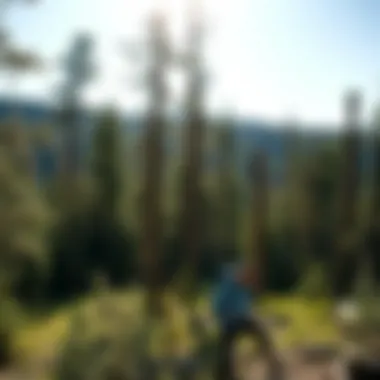

Equipment and Gear Recommendations
When it comes to hiking, having the right equipment can be the difference between a stroll and a struggle. Proper gear doesn’t just protect you; it enhances your abilities on the trail. Here are some essentials that every hiker should consider:
- Footwear: Sturdy hiking boots provide the necessary support, grip, and protection. Look for breathable materials and proper fit to avoid discomfort.
- Clothing: Dress in layers. Weather in Monongahela can change quicker than a cat can lick its ear. Use moisture-wicking fabrics to stay dry, with an insulating layer and a waterproof outer layer for added protection.
- Daypack: A comfortable backpack is key for carrying supplies. Ensure it has enough space and compartments for organization.
- Navigation Tools: A map, compass, or GPS device can be lifelines when venturing into more remote areas. Familiarity with these tools, along with backup power sources for electronic devices, is wise.
- Hydration System: Staying hydrated is paramount. Invest in a hydration bladder or carry water bottles, ensuring you have enough for the trip’s length.
- Emergency Supplies: A basic first aid kit, a multi-tool, and a flashlight should always be on hand. Other useful items include a whistle, fire-starting materials, and a lightweight emergency blanket.
Failure to equip oneself adequately can lead to situations that make the whole hiking adventure turn from pleasure to panic. Be sure to check the weather conditions too — a small squall can wreak havoc on an unprepared hiker.
Route Planning Techniques
Planning your route is about more than just picking a starting point and destination. It's about making informed decisions based on various factors:
- Trail Research: Utilize resources such as the U.S. Forest Service’s website or popular hiking forums, like reddit.com/r/hiking, to gather insights on trail conditions, length, and difficulty. Don’t overlook recent reviews or trail updates from other hikers.
- Time Management: Consider how long the hike will take and factor in breaks and potential delays. Be realistic about your pace, especially in a diverse landscape like Monongahela.
- Elevation Profiles: Review the elevation gain throughout your route. Understanding the terrain helps you prepare for climbs and descents, allowing for a more effective physical assessment of your capabilities.
- Safety Checkpoints: Identify landmarks or areas where you can regroup or seek help if needed. This could be ranger stations or even popular picnic spots along the way.
- Access Points: Knowing how to enter and exit potential routes can be vital during inclement weather or when hikers need to cut their trip short.
Creating a detailed route plan doesn't merely pave the way for a successful hike; it instills a sense of accomplishment and safety. Navigating the Monongahela without a solid plan can have consequences that are as dire as they are unanticipated.
"Preparation may be tedious, but it’s the unsung hero of any great adventure."
Ecological Aspects of Monongahela National Forest
The ecological aspects of Monongahela National Forest represent a vital component not just for the forest itself, but for the region and beyond. This unique forest is one of the largest in the eastern United States and acts as a crucial habitat for countless species of plants and animals. The rich biodiversity found here is interlinked with our overall understanding of ecology and conservation efforts. While hiking through its trails, the essence of what makes this forest truly special can be felt, leading to a deeper appreciation for our natural surroundings.
Flora and Fauna Diversity
The flora of Monongahela National Forest is as diverse as a crayon box, filled with vibrant colors and various shapes. The forest houses over 1,300 species of plants, which include towering oaks, delicate wildflowers, and cascading ferns. The mix of deciduous and coniferous trees provides a picturesque setting throughout the year, changing colors with the seasons from deep greens to fiery oranges.
When it comes to fauna, the forest is home to numerous animals such as deer, black bears, and a variety of bird species, including the elusive wood thrush and hearty wild turkeys. This rich tapestry of life not only supports the ecosystem but also offers a living laboratory for researchers interested in studying biodiversity.
"Biodiversity ensures stability and resilience within ecosystems. Monongahela Forest exemplifies how varied life creates a balanced environment."
In short, every step taken on a trail reveals intricate interactions between the species, making thoughtful observation essential for understanding ecological relationships.
Conservation Efforts in the Forest
Conservation efforts within Monongahela National Forest are not just a passing trend; they are crucial for sustaining its rich ecological heritage. Various organizations work in tandem, focusing on protecting habitats and restoring ecosystems impacted by human activity and natural phenomena. These initiatives often include:
- Invasive Species Management: Teams actively manage invasive plant species that threaten native flora. By holding workshops and engaging local communities, they educate and rally support for their efforts.
- Wildlife Habitat Improvement: Projects aimed at enhancing habitats for declining species are commonplace. This could mean creating nesting sites or promoting growth of particular plant species that support other wildlife.
- Research and Monitoring Programs: Continuous research plays an essential role. Observations and studies help understand shifts in populations, climate effects, and the overall health of forest ecosystems.
By integrating scientific research with community participation, the conservation initiatives underlie a comprehensive approach towards protecting the ecological integrity of Monongahela National Forest. Understanding the interplay of these efforts can provide insight into why preservation corridors and biodiversity hotspots are key to maintaining ecological balance.
Safety Considerations for Hikers
Safety is paramount whenever one considers venturing into the expansive trails of Monongahela National Forest. This section aims to highlight crucial safety practices that not only protect individual hikers but also preserve the environment that we cherish. Hiking in such a dynamic ecosystem demands awareness, preparation, and respect for the natural world. Ignoring safety can lead to accidents or injuries, detracting from the experience and potentially causing harm. Adhering to safety protocols can enhance enjoyment and ensure a memorable adventure.
Navigational Safety Tips
Finding one's way around the forest can sometimes feel like navigating a maze, especially with its winding paths and varied terrains. Here are some tips to keep in mind when traversing the trails:
- Always carry a map and compass. Relying solely on technology may not always be a good idea, as signals can be spotty or nonexistent in remote areas. A physical map and compass can be life-saving tools.
- Understand trail markers. Familiarize yourself with different types of trail blazes and markers along the routes. Knowing what they mean can prevent hikers from going off the intended path.
- Track your progress. It's wise to check in on your knowledg with time and distance. Use landmarks, elevation changes, or even a fitness tracker to gauge how far you've traveled. This can prevent prolonged wandering.
- Buddy system. Whenever possible, hike with a friend or join a group. There's safety in numbers, and having someone else around can help in case of emergencies.
- Notify someone of your plans. Whether it’s a friend, family member, or park ranger, letting someone know where you are going and when you expect to return is foundational in case anything goes awry.
These essential navigational practices can make a hike in Monongahela not only enjoyable but also safe.
Wildlife Encounters
Encountering wildlife is part of the magic that the Monongahela region offers, but it's vital to approach these encounters with caution and respect. The forest is home to various creatures, from harmless birds and squirrels to larger animals like black bears and deer. Here are some considerations:
- Maintain a distance. If you spot wildlife, it’s best to keep your distance. Use binoculars or a camera with a zoom lens for a closer look without disturbing their natural behavior.
- Store food properly. When camping or taking breaks, store food securely. Bears have a keen sense of smell, and improperly stored food can attract them. Always follow the park's guidelines on food storage.
- Know what to do during an encounter. If you come face to face with a bear, stay calm. Make noise but do not run; slowly back away while avoiding direct eye contact. For snakes, give them space and walk around them—most will not chase you.
- Educate yourself about local wildlife. Understanding which animals inhabit the area, their behaviors, and their habitats will better prepare you for encounters. The West Virginia Division of Natural Resources provides resources about local wildlife that can enhance your knowledge.
In the end, respecting wildlife contributes to a safe hiking experience and protects the forest's animals. A healthy regard for both nature and personal safety ensures that the magic of Monongahela National Forest endures for future visitors to enjoy.
Cultural Significance of the Forest
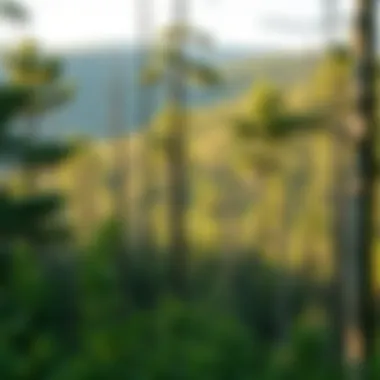
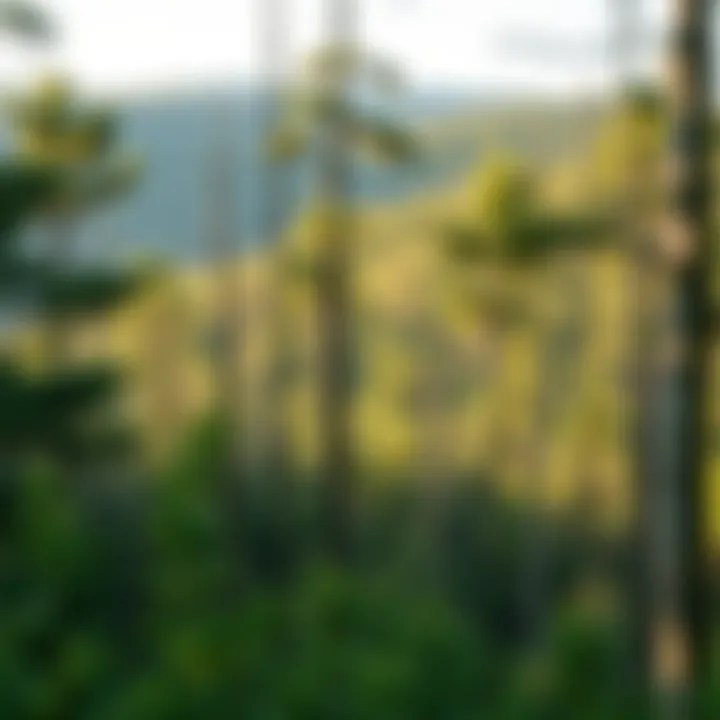
Understanding the cultural significance of Monongahela National Forest offers a deeper appreciation of its value beyond mere aesthetics or recreation. Among the towering trees and serene landscapes lies a tapestry of history that is woven through the experiences of those who have inhabited and traversed this terrain. This section highlights the diverse cultural narratives that enrich the forest's identity, explaining how it resonates with both historical and contemporary significance.
Indigenous Heritage
Before European settlers arrived, the Monongahela area was a vibrant habitat for various Indigenous tribes, chiefly the Shawnee and the Seneca. Their presence has contributed a layer of identity to the land that persists to this day. These tribes revered the forest, not only as a resource but as a sacred space that held spiritual significance. They shared a unique relationship with nature, often viewing the land as a living entity worthy of respect and stewardship.
Their practices included seasonal gatherings, hunting, and the cultivation of native plants. Common crops such as corn, beans, and squash formed part of their agriculture, known as the "Three Sisters." This traditional farming technique is not only an agricultural practice but also a cultural symbol of cooperation and sustainability.
The remnants of Indigenous trails can still be seen today, many of which have transformed into modern hiking paths. Engagements with local Indigenous communities can lead to educational opportunities, shedding light on traditional ecological knowledge and practices that enhance our understanding of forest conservation and biodiversity.
"The forest is not just a place to explore, it’s a living book of our shared history, where each tree tells a story of those who walked before us."
Historical Land Use
As settlers began to arrive in the 18th century, the character of land use in the Monongahela region started to shift dramatically. The dense forests became prime targets for timber harvesting due to the high-demand for lumber in burgeoning American towns. The historical landscape is marked by logging roads and remnants of old sawmills, many of which have now given way to the wild renewals in the area.
During the late 19th and early 20th centuries, the forest became a hotspot for coal extraction. Mining towns sprung up and disappeared as quickly as they were formed, leaving behind a patchwork of defunct structures and lingering pollution. Today, efforts to restore these impacted areas remind us of the consequences of industrial progress.
Moreover, the establishment of Monongahela National Forest in the 1920s marked a significant transition from exploitation to preservation. The relentless partnership between humans and the forest has been redefined: once a source of raw materials, it now serves as a sanctuary for both wildlife and recreational users.
In summary, Monongahela National Forest is a living testament to the ever-evolving relationship between people and nature. Its cultural landscape is deeply interwoven with both Indigenous narratives and the footprints of settlers, offering invaluable insights that emphasize conservation, appreciation, and respect for our natural heritage.
Far beyond its picturesque hiking trails, the forest invites visitors to explore not only its physical beauty but also its rich cultural narratives—fueling a responsible coexistence with the environment.
Recreational Opportunities Beyond Hiking
Monongahela National Forest is not just a hiker's paradise; it's a vibrant tapestry of activities waiting to be explored. While trekking through the lush greenery is truly invigorating, the forest offers a wealth of recreational opportunities that cater to different interests and passions. This section dives into two significant forms of outdoor recreation you can indulge in while visiting the forest: camping and fishing, both of which present unique experiences aligned with the natural richness of the area.
Camping Facilities and Guidelines
Camping in Monongahela is an invitation to reconnect with nature in a way that sleeping in a city hotel simply can't replicate. With various campgrounds scattered throughout the forest, campers can choose a spot that resonates best with their spirit of adventure. Some popular campgrounds include:
- Blackwater Falls State Park: Nestled near the famous falls, this site offers both tenting and cabin options, blending ease with breathtaking views.
- Seneca Shadows: Located along the banks of Seneca Creek, it’s known for its serene atmosphere and proximity to fishing spots.
- Cranberry Campground: A family-friendly site with numerous amenities, perfect for those new to the camping experience.
A couple of important guidelines to keep in mind when camping in Monongahela include:
- Respect Nature: Make sure to follow Leave No Trace principles, ensuring that your footprint is minimal.
- Stay Prepared: Weather in the forest can change faster than the blink of an eye. Being ready for rain or sudden temperature drops will keep your trip enjoyable. Bring appropriate gear and clothing.
“Camping is not about sleeping in tents—it's about living in nature.”
Fishing and Water Activities
When it comes to fishing and water activities, Monongahela National Forest doesn’t disappoint. Various streams and lakes within the forest provide excellent opportunities for anglers of all skill levels. Species like trout, bass, and catfish populate these waters, making them a hotspot for fishing enthusiasts.
Some outstanding fishing locations include:
- Blackwater River: A pristine river where both fly and conventional fishing thrive. With its scenic surroundings, it's not just fishing; it’s an experience that soothes the soul.
- Cranberry River: Famous for its good trout population, this river draws many anglers, especially during the spring season when fish are spawning.
- Lake Pendleton: Best suited for families looking to cast a line while enjoying a picnic by the shore.
It's important to manage your expectations and follow state regulations regarding fishing licenses. Here are a few tips to ensure a great fishing trip:
- Fish Early Morning or Late Evening: Cool waters in the twilight hours are more favorable conditions for fish.
- Know Your Equipment: Whether you’re using bait or lures, understanding the right gear for the fish species is crucial.
For watersport enthusiasts, canoeing and kayaking are also popular activities within certain lakes and rivers, allowing you to experience the forest from a different angle. Paddle your way through the tranquil waters while soaking in the serene surroundings.
In summary, recreational opportunities beyond hiking enhance the Monongahela National Forest experience. Whether you’re camping under a star-studded sky or casting your line into a glistening stream, each activity invites interaction with the forest’s stunning backdrop—an escape that rekindles the bond we have with nature.
Visitor Services and Resources
Visitor services and resources within Monongahela National Forest are key components for ensuring that every hiking experience is both enjoyable and safe. These services not only help hikers navigate the considerable terrain but also enrich their understanding of the unique ecological and historical aspects of the forest. In a place as extensive and diverse as Monongahela, visitors can vastly benefit from the resources available, enabling them to make the most of their outdoor adventures.


Visitor Centers and Interpretive Programs
The visitor centers within Monongahela National Forest serve as crucial hubs for information and engagement. These centers typically provide a range of exhibits and materials that spotlight the forest's rich natural history and important conservation efforts. For hikers and nature enthusiasts, the interpretive programs offered are particularly valuable. They may include guided walks, educational workshops, and presentations on local wildlife and plant species, which allow visitors to gain a deeper awareness of the intricacies of the environment around them.
Moreover, these programs often cater to different demographics – families, individual hikers, or even students – making learning about the forest accessible and enjoyable for everyone. Visitors can learn about the principles of Leave No Trace, which is critical in maintaining the integrity of such ecosystems.
"Your exploration of Monongahela becomes even richer when you understand the landscape's hidden stories."
When planning a hike, it's advisable to stop by these visitor centers first. They can provide up-to-date information on trail conditions, closures, and even weather advisories that might affect safety during your outing. Center staff are generally knowledgeable and passionate, often willing to share personal insights on best trails for the season or time of day.
Maps and Guides
Navigating through Monongahela National Forest can be a delightful challenge, with its myriad of trails and scenic spots. Therefore, having reliable maps and guides is paramount. While many hikers rely on GPS devices or apps, having a physical map can be a lifesaver, especially in areas where cellular service may be spotty.
Maps available at visitor centers typically highlight not just the trails but also key points of interest, such as waterfalls, scenic overlooks, and picnic areas. Furthermore, they often classify trails by difficulty, length, and points of interest along the way. It is highly recommended to review these maps thoroughly, as some trails may lead to remote areas or require specific skills.
- Consider these points when utilizing maps:
- Trail Connectivity: Understand how trails link up or diverge.
- Elevation Changes: Note areas of steep ascent or descent, which can be crucial for planning breaks.
- Terrain Types: If the terrain is rugged, it may require different footwear or gear.
- Wildlife Awareness Areas: Locations where wildlife encounters might be more frequent, requiring additional caution.
In addition to physical maps, various guidebooks and online resources can provide fantastic insights into the flora and fauna you’ll encounter while hiking. Websites like nps.gov or the USDA Forest Service offer useful information and downloadable resources, ensuring you're fully prepared.
In sum, visitor services and resources within Monongahela National Forest are designed not just for convenience but to enrich each hiker's journey with knowledge and safety. Leveraging these available tools can lead to a more fulfilling and responsible engagement with nature.
Challenges and Considerations
Exploring the beauty of Monongahela National Forest is not without its hurdles and important considerations. As much as the trails may entice hikers with their wild charm and scenic vistas, awareness of the challenges is vital for safety and enjoyment. This section elaborates on critical themes concerning environmental threats and regulatory changes that could influence one’s hiking experience.
Environmental Threats
The natural environment is often fraught with potential threats that demand the respect and attention of hikers. Monongahela, with its lush canopies and diverse ecosystems, faces a variety of environmental challenges. Some hazards include:
- Invasive Species: Non-native plants and animals can wreak havoc on local ecosystems. For instance, the spread of Japanese knotweed hinders the growth of native flora, ultimately altering habitats.
- Climate Change: The repercussions of climate shifts are evident in changing species distributions and altered weather patterns. For example, warmer temperatures can disrupt the timing of flowering plants, affecting pollinators like bees.
- Wildfires: Though less common in the Eastern US, wildfire incidents can occur, especially under dry conditions. Awareness of fire bans and safety practices is paramount.
- Erosion: Heavy foot traffic on trails leads to soil erosion, jeopardizing the integrity of the trails themselves. This can create muddy patches that are hazardous for hikers. Just as well, the disruption of roots can damage trees and affect water quality in nearby streams.
Each of these threats requires consideration from hikers, but they also pose an opportunity for advocacy and conservation efforts.
Regulatory Changes
Regulations in Monongahela National Forest are subject to changes that may impact access and activities. Keeping abreast of these changes is crucial for outdoor enthusiasts. Some potential changes include:
- Access Restrictions: Certain trails may temporarily close due to maintenance, wildlife nesting, or safety concerns. It’s wise to check for updates before heading out, as unforeseen closures can impact plans significantly.
- Permit Requirements: Designated areas may require permits for camping or specific activities. Stay updated by checking the official U.S. Forest Service website for any such regulations.
- Wildlife Protections: Increasingly stringent regulations may aim to protect vulnerable species. For instance, if nesting areas are discovered, certain zones may be off-limits during breeding seasons.
- Trail Use Regulations: As the forest attracts more visitors, there could be shifts in how trails are used, from restrictions on motorized vehicles to guidelines for managing foot traffic.
Adapting to these regulatory changes requires flexibility and a willingness to engage with the forest sustainably.
Understanding the environmental threats and being mindful of regulatory changes in Monongahela National Forest can significantly enhance not only the hiking experience but also contribute to the preservation of this precious natural resource.
Finale
Engaging with Monongahela National Forest offers a treasure trove of experiences for hikers and nature enthusiasts alike. The conclusion of this guide emphasizes the importance of understanding and appreciating the unique landscapes, ecosystems, and cultural heritage of this remarkable area.
First and foremost, hiking in Monongahela is not merely about traversing trails; it’s about immersing oneself in an environment that has evolved over millennia. The forest stands as a testament to conservation and the natural beauty of Appalachia. Visitors gain insights into the complex interactions within the ecosystem, fostering a deeper respect for the environment.
Moreover, the preparation and knowledge needed for hiking in Monongahela significantly enhances the overall experience. By familiarizing oneself with trail specifics, necessary equipment, and potential hazards, hikers can discover the forest's diverse offerings safely and enjoyably.
"In the heart of Monongahela, the landscape is the text, and every trail speaks volumes if one chooses to listen."
As one wanders through the winding paths, the intersection of ecology, history, and personal experience unfolds. Engaging with the diverse flora and fauna or reflecting upon the indigenous heritage creates memorable and meaningful moments. The forest isn’t merely a backdrop; it is a living narrative that unfolds with each step.
Additionally, contention surrounding environmental threats and regulations highlights the ongoing conversation about conservation—further enriching the visitor's journey. Understanding these challenges equips hikers with the mindset to advocate for responsible usage and preservation of the natural world.
Ultimately, engaging with Monongahela National Forest is an opportunity to reflect on our relationship with nature and our responsibility toward it. This conclusion serves to remind hikers of the myriad of benefits derived from their adventures within this national treasure. Embracing the spirit of exploration, respect, and curiosity not only enriches individual experiences but fosters a broader commitment to ensuring these natural ecosystems thrive for generations to come.
Final Thoughts on Engaging with Monongahela
When stepping into Monongahela, it’s crucial to not just hike but to connect with the land, to reflect on its stories, and to contribute to its preservation. Engaging actively means considering your footprint—not just physically, but also through the lens of cultural and ecological impact. Each trail taken is a choice that influences both your journey and the future of the forest.
Therefore, as you lace up those hiking boots and prepare for the adventure, remember the whispers of the trees, the songs of the streams, and the history beneath your feet. In doing so, you turn your hike into an expedition full of learning and connection. Take the time to appreciate not only where you are but also the journey that brought you there.















